Share
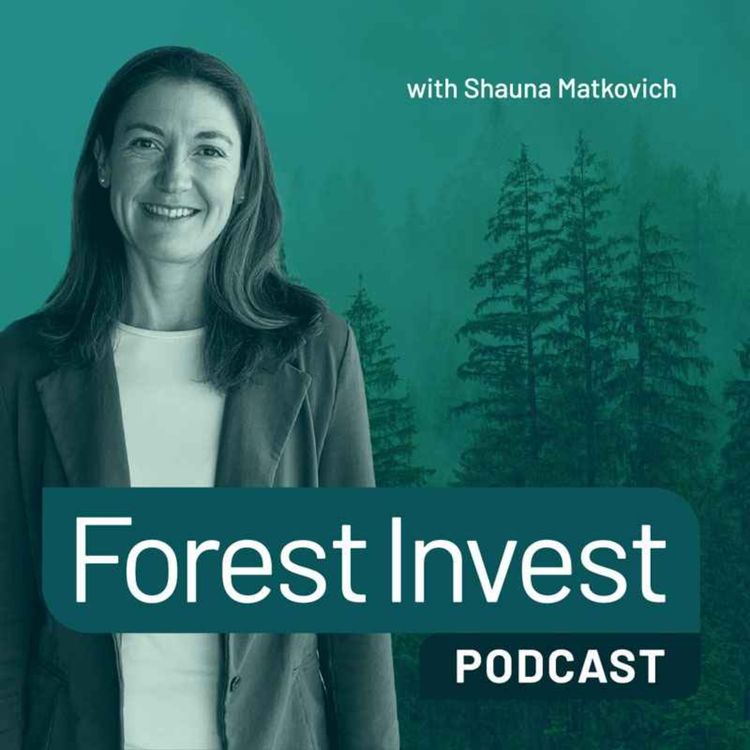
Forest Invest
Impact Forestry in the Pacific Northwest - with Bettina Von Hagen
In this week's episode, I speak with Bettina Von Hagen, CEO, Co-Founder and Board Chair of EFM. In this conversation we talk about the unique characteristics of Pacific Northwest forests that make this region rich in opportunity for both commercial timber and an array of impact benefits. Bettina goes deep explaining some of the complex ecosystem functions at play in these forests, from migrating salmon to mycorrhizal fungi and the commercial attractiveness of most Pacific Northwest tree species. She describes the 5 R's that EFM applies to their forest management: Rotations, Retention, Reserves, Restoration and Relationships, discusses the carbon market opportunity, provides tips and tricks for making impact forestry operational, and how important active wildfire management strategies are in some of the regions EFM operates.
Ecotrust Forest Management (EFM)
Favourite trees: Western redcedar (Thuja plicata), Sitka spruce (Picea sitchensis)
Host: Shauna Matkovich - The ForestLink
Producer and editor: Magdalena Laas - Unscripted Creatives
02:27
Introduction to EFM
07:32
EMF and impact investing
09:26
5 R's of forest management: rotation, retention, reserves, restoration, relationships
14:23
Relationships with communities
16:41
Uptake of this change in silviculture approach
19:19
Others following in EMF's footsteps
22:30
How EMF monetise benefits other than carbon credits
25:33
Carry in funds structure
27:45
Investor sentiments towards forest impact strategies, and impact metrics (besides carbon)
31:43
Fire as part of natural ecosystem
33:22
Gender diversity and equality in the forestry industry, and difference in approaches
40:05
Next for EMF
41:43
Markets for ecosystem services is still very small
44:47
Actionable advice
Nature by MaxKoMusic/Soundcloud
Sopwell Woodlands and Scohaboy Bog SAC, Cloughjordan, Co Tipperary, IRELAND by wild_rumpus/Soundcloud
More episodes
View all episodes
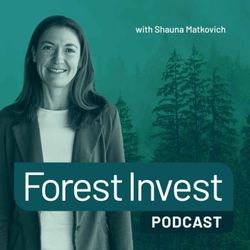
35. Ethical Business in Forest Investment - with Eugene Kraamwinkel
36:33||Season 2, Ep. 35Today I’m joined by Eugene Kraamwinkel, CEO of two agribusinesses in Cambodia – Phu Rieng Kratie Ampivath and Dau Tu Saigon Binh Phuoc. In our conversation, Eugene highlights the importance of having a strong Code of Conduct to ensure a long-term sustainable forest business, especially in emerging markets and industries such as forestry and agriculture. We discuss how investors can evaluate business integrity risks and red flags to watch for. Eugene shares a roadmap on how forest business owners can make stepwise improvements toward changing the culture around moral conduct. Eugene also emphasizes that ethical business is not just about committing to transparency and anti-corruption but also about environmental and social ethics.QuoteIt is a long-term investment, and it is going to give you sustainability, and it won’t be sustainable if you want to do it over a short-term period. While forestry investments can be profitable it requires patience, deep commitment to responsible management, and investors need to prioritize opportunities that will align with strong environmental, social, and governance principles to ensure business operates transparently, ethically, and sustainably. Important linksLinkedIn: Eugene KraamwinkelFavorite tree: South African yellowwood (Podocarpus latifolius)Production teamHost: Shauna Matkovich - The ForestLinkProducer and editor: Magdalena Laas - Unscripted CreativesDetails02:32Eugene’s background & drive for ethical business practices4:59Why is business integrity important in forestry and agribusiness?07:57Make investors more confident in emerging markets with ethical business conduct risk11:44 Examples of government initiatives to bring about change15:11Starting point for ethical business conduct20:14How can investors be confident that code of conduct will ensure ethical operations in practice25:47Example of shift in from unethical to ethical27:25Red flags for investorsLink between ethics and climate change and sustainability impact33:44Actionable adviceSound libraryNature by MaxKoMusic/SoundcloudSopwell Woodlands and Scohaboy Bog SAC, Cloughjordan, Co Tipperary, IRELAND by wild_rumpus/Soundcloud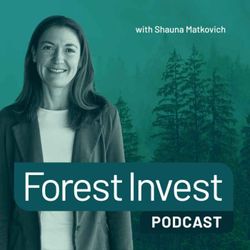
34. Due Diligence in Forestry Nature-based Solutions - with Jamie Lawrence
47:53||Season 2, Ep. 34Today, I’m joined by Jamie Lawrence, Co-Founder of Xilva. In this conversation, Jamie describes the project evaluation process taken by Xilva, which evaluates nature-based solutions projects for numerous capital providers, from investors to corporates and donors. Jamie describes the six categories of Xilva’s Due Diligence Framework and explains the reasoning for interconnecting these in an assessment. After evaluating more than 300 projects, he explains the three common mistakes project developers make when preparing for funding. He also stresses the merits of the promising projects that cross the Xilva desk. We talk more about the importance of a good strategy on the side of the capital provider to prevent a project from stalling due to misalignment in internal processes.QuoteAssets like forestry are perhaps one of society’s most undervalued assets. We will value those forests for specific assets like timber when they are providing so much more. They could be in a water catchment area, they provide the very air that we breathe, biodiversity, culture, it is a given. Important linksXilvaXilva on LinkedInJamie Lawrence in LinkedInFavourite tree: Cork tree (Quercus suber)Production teamHost: Shauna Matkovich - The ForestLinkProducer and editor: Magdalena Laas - Unscripted CreativesDetails01:13 Background of Xilva & Jamie03:19Silva;s services in nature-based solutions space05:09Profiles of clients - capital providers06:49How do you find projects?08:06Screening strategy for projects10:27Due diligence to support clients - six categories of framework16:24Clients bring own criteria17:50External collaborations or expertise, leverage global assets20:44Types of projects21:52What makes a strong project - and which issues exist in practice/ignored factors24:50Communication on the ground, challenges, & risk management30:11Strengths in projects, makes projects shine32:27Reasons for projects getting stuck37:14Effect of voluntary and carbon markets on supply and demand of nature-based solutions. Difference in perceptions in different markets (Global North/Global South)41:59Next for Silva44:43Actionable advice47:08Contact detailsSound libraryNature by MaxKoMusic/SoundcloudSopwell Woodlands and Scohaboy Bog SAC, Cloughjordan, Co Tipperary, IRELAND by wild_rumpus/Soundcloud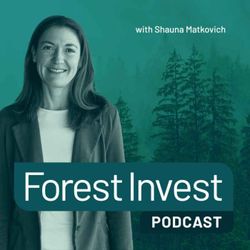
33. An Institutional Investor’s Approach to Forest Investment - with Jasper Renk of MEAG
40:39||Season 2, Ep. 33Today I’m joined by Jasper Renk, Senior Investment Manager for Illiquid Assets in Natural Capital at MEAG. In this advice-packed episode, Jasper shares MEAG’s 15-year experience in investing in Timberland. He explains the most critical determining factors in deciding MEAG’s forest investment jurisdictions and describes how the organisation is well equipped to address climate risks, sitting on 140 years of climate data. Jasper shares his thoughts on how to house your forest investment and sheds light on why forest investment isn’t the most suitable for debt instruments. We talk about sustainability and how it is a core tenant of how they invest, emphasising that prioritising sustainability reduces risk and secures return expectations.QuoteSo what I'm getting at is that for us to retain the environmental functions and to retain a functioning ecosystem, that then. in turn, provides a renewable resource such as roundwood to the market – to retain that even in changing climates. It's not something that we must balance against return, but that ensures that in 10,20, 50, 100 years, we will still be able to provide that resource to the market. This is kind of the difference maybe in our thinking as opposed to some other market participants.Essentially, it goes hand in hand.Important linksMEAGMEAG on LinkedInJasper Renk on LinkedInFavourite trees: SpruceProduction teamHost: Shauna Matkovich - The ForestLinkProducer and editor: Magdalena Laas - Unscripted CreativesDetails01:02Background to MEAG & Jasper04:06Decision to move into timberland investments05:11MEAG's perception of timberland allocation performance07:58Shift in how assets are housed in portfolio10:51Learning curve for institutional investor12:52Risk-reduced way to gain exposure13:44Best instrument to get started (and trajectory)16:33 Risk return profile of MEAG19:22Operational side of owned forest assets 22:57Functioning transactional market24:38Investment vehicles, e,g. debt instruments27:45Sustainability 32:00Sustainability objectives34:28Beneficiaries stand on sustainability39:08Actionable advice39:50Contact detailsSound libraryNature by MaxKoMusic/SoundcloudSopwell Woodlands and Scohaboy Bog SAC, Cloughjordan, Co Tipperary, IRELAND by wild_rumpus/Soundcloud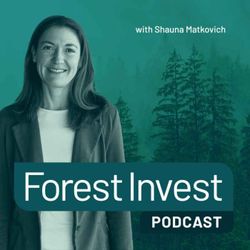
31. Accelerating Early-stage Forest Assets - with Paul Hol
33:26||Season 2, Ep. 31Today, Paul Hol, CEO of Form International and Co-Founder of Treevive, joins me for a conversation. He shares insights from his journey in forest investment within emerging markets, along with the lessons he has learned. Paul also introduces Treevive, a funding vehicle dedicated to providing feasibility funds for successful projects. These funds support activities such as early stage feasibility assessments, preparing for carbon and forest management certification, and strengthening proponents' ESG systems. Additionally, he outlines the three main stages of development: feasibility (supported by Treevive), operational progress, and the final phase of raising equity.QuoteUse ESG experts who can help you with the right decision on the impacts, because we are really talking about impact investors, where it is always seeking that balance between impact and return of investments. Important linksForm InternationalTreevivePaul Hol on LinkedInFavourite tree: Beech tree (Fagus sylvatica)Production teamHost: Shauna Matkovich - The ForestLinkProducer and editor: Magdalena Laas - Unscripted CreativesDetails02:22Introduction to Paul's experience in emerging markets and an overview of Treevive 06:16Criteria for project selection and current portfolio08:11Description of typical project and timeframe, Treevive's level of involvement10:33Insights into the biggest risks (flagged during assessment)13:46Types of developers on the ground - how Treevive works with them16:16Working with NGOs and corporations of farmers18:30Engagement structurally and financially20:22Main objectives and success metrics22:55Distinction between Form International and Treevive & Investor profile24:25Expectation on ROI & commercial position25:29Framework that attracts new investors (includes sustainability assessment, certification etc)26:46Three phases of funding: feasibility, operations, raise equity29:00Investor portfolio in second phase30:05Pre-credit sales opportunity, but with caveats31:28Actionable adviceSound libraryNature by MaxKoMusic/SoundcloudSopwell Woodlands and Scohaboy Bog SAC, Cloughjordan, Co Tipperary, IRELAND by wild_rumpus/Soundcloud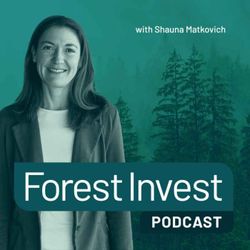
30. Investor Advice Highlight Reel
21:07||Season 2, Ep. 30Today marks the first episode of 2025! I thought we'd start the year with a highlight reel of advice that Forest Invest guests have provided to new investors. If you've been listening for a while, you will know that I always ask my guests this question: “If you could give one piece of actionable advice to investors – new to the forestry asset class – that would help them decide if and how to invest, what would it be?” So tune in now for some great responses, representing 10 of the past 29 episodes.GuestsSteve Novacavic | CAIAAndrea Braun | Unique Forest InvestmentsAsger Olesen & Herbert Yancey | International Woodland CompanyAleksandra Holmlund | Quarlbo NACDr. Colin Smith | Paperbark ConsultingMaryKate Bullen & Juan Pablo Lankenau | Forest Investment AssociatesPeter D'Anieri | Sewell ForestryTony Simons | Center for International Forestry Research and World Agroforestry (CIFOR-ICRAF)Martin Berg & James Bullen | Climate Asset ManagementLuis Neves Silva & Andrew Heald | iNovalandProduction teamHost: Shauna Matkovich - The ForestLinkProducer and editor: Magdalena Laas - Unscripted CreativesSound libraryNature by MaxKoMusic/SoundcloudSopwell Woodlands and Scohaboy Bog SAC, Cloughjordan, Co Tipperary, IRELAND by wild_rumpus/SoundcloudAmbient Documentary/Sound Guru/Pixabay
29. Rethinking Risk and Value in Forest Landscape Restoration - with Luís Neves Silva and Andrew Heald
40:08||Season 1, Ep. 29Show notesToday, Luís Neves Silva, CEO and Andrew Heald, COO of iNovaland, join me. They developed a forest landscape restoration project with a unique approach. In this conversation, Luís and Andrew tell me how they met through the New Generation Plantations platform and wanted to transform the insights shared through this group into one of implementation on the ground. Their forest landscape restoration model came from their experience in the forest sector and strong networks in the project areas. Andrew and Luis describe their cornerstone projects in Brazil and Ghana, give insights into why they are different, and urge investors to think about risk and value in other ways to achieve real forest resilience and a more sustainable economic model.QuotesIf we have the people living in the landscape as our key stewards of our programmes, then our projects, they are robust and resilient. We would like to think that our forests there will mature, storing a lot of carbon, being rich in biodiversity, and contributing to the wealth of the people living in that landscape. - LuísIn a rapidly changing climate, any investor needs to be - and looking at nature-based solutions or growing timber or food - you need to be comfortable with that level of risk and understadn how your investment and actions can reduce that risk and increase value. - AndrewImportant linksiNovalandAndrew Heald LinkedInLuís Neves SilvaFavourite trees: Cork (Quercus suber), Douglas fir (Pseudotsuga menziesii)Production teamHost: Shauna Matkovich - The ForestLinkProducer and editor: Magdalena Laas - Unscripted CreativesDetails01:20Luís professional background02:18Andrew's professional background04:20How is iNovaland different?06:23iNovaland's evolution, growth, structure & projects09:47Services - project developer13:28Brazil project17:12Ghana project19:07Desired outcomes20:30Investor profile - interested in broader outcomes, incl. social, biodiversity, carbon22:00Project focus - forest restoration23:05Resilience of investment/landscapes24:00Progression of cycles - added dimensions27:19Ability to attract new investors - local communities central to development of projects30.13Ecosystems service systems tied to projects31:18Complexity in levels of engagement with stakeholders in both programmes33:16Future of iNovaland34:43Replication of projects36:32Advice39:30Contact details Sound libraryNature by MaxKoMusic/SoundcloudSopwell Woodlands and Scohaboy Bog SAC, Cloughjordan, Co Tipperary, IRELAND by wild_rumpus/Soundcloud
28. Global Systems Change through Forest Investment with David Brand
30:41||Season 1, Ep. 28Show notesIn today's conversation, I'm delighted to be joined by David Brand, Executive Chair of New Forests and Independent Chair of the International Sustainable Forestry Coalition. In this chat, we discuss New Forests' incredible growth story and the vision that the company has been able to hold on to since its humble beginnings in 2005. We discuss David's advocacy work for forest investment, and in addition to outlining what inspires him about the sector, he shares what most frustrates him. David also introduces the International Sustainable Forestry Coalition, why it was created, and how its members work towards systemic change in the forest sector amidst the world's biggest circular bioeconomy, climate, and nature opportunity.QuotesBeing sustainable could deliver higher returns.There are tremendous opportunities here in terms of long-term sustainable, commodity markets, arrising bio-economy opportunity, where we can effectively substitute anything made out of fossil fuels with a tree.Important linksNew ForestsInternational Sustainable Forestry Coalition (ISFC)Forest Climate Solutions FundFavourite trees: Eastern white pine (Pinus strobus), Douglas Fir (Pseudotsuga menziesii), EucalyptusProduction teamHost: Shauna Matkovich - The ForestLinkProducer and editor: Magdalena Laas - Unscripted CreativesDetails03:48History and growth of New Forests as a company and focus on sustainability10:18Landscape and forest fund11:41External shareholders/investors - including Mitsui investors (2016) and Nomura - the transition/growth of the company15:40Impact - the sustainability aspect remains the driving force with new leadership 16:42Successes of New Forests - "never compromised our vision"18:49Advocacy & international commitments20:09Future opportunities/partnerships22:32Frustrations re. forest investment sector24:26International Sustainable Forestry Coalition (ISFC) - nature-positive capital/assets & long-term ROI28:03Next for ISFC - circular bio-economy transition 29:44Advice30:10Contact detailsSound libraryNature by MaxKoMusic/SoundcloudSopwell Woodlands and Scohaboy Bog SAC, Cloughjordan, Co Tipperary, IRELAND by wild_rumpus/Soundcloud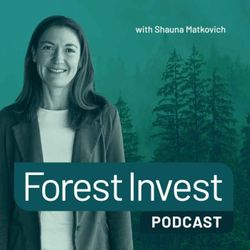
27. The Climate and Nature Tech Race with Romain Fau
31:26||Season 1, Ep. 27Show notesToday, I’m joined by Romain Fau, CEO and Co-Founder of Kanop, a climate tech firm supporting its clients with remote sensing data provision, analysis, validation, and so much more. In our conversation, Romain shares why he entered the climate space and Kanop’s journey to date. We explore the general upswing in climate and nature tech and provide listeners with tips for engaging with the right service providers for their needs. We also look at the specific use case for Kanop’s support with the VM0047 methodology.QuoteI would encourage a potential investor to look at the resilience of the project. Climate change has a big impact on nature, unfortunatley. And, we need to ensure what we do, where we invest, will remain here for long. Important linksKanopRomain Fau (LinkedIn)Email: romain@kanop.ioFavourite tree: Quercus alba (White oak) Production teamHost: Shauna Matkovich - The ForestLinkProducer and editor: Magdalena Laas - Unscripted CreativesDetails01:19Romain's professional background and overview of Kanop03:51Evolvement of services06:23Evaluation re. feasibility of project07:20Client profile08:34Climate & nature tech industry11:41Open-source resources14:57Provider right fit for needs17:33Kanop's strategy for nature-based projects18:37VM0047 methodology & voluntary carbon market & remote sensing data21:48Data unavailable or unusable - AI needs fewer data points24:08AI limitations - garbage in, garbage out, black-box effect, & improvements27:00Next for Kanop, e.g., supply chain monitoring, biodiversity29:31Advice30:35Contact details Sound libraryNature by MaxKoMusic/SoundcloudSopwell Woodlands and Scohaboy Bog SAC, Cloughjordan, Co Tipperary, IRELAND by wild_rumpus/Soundcloud